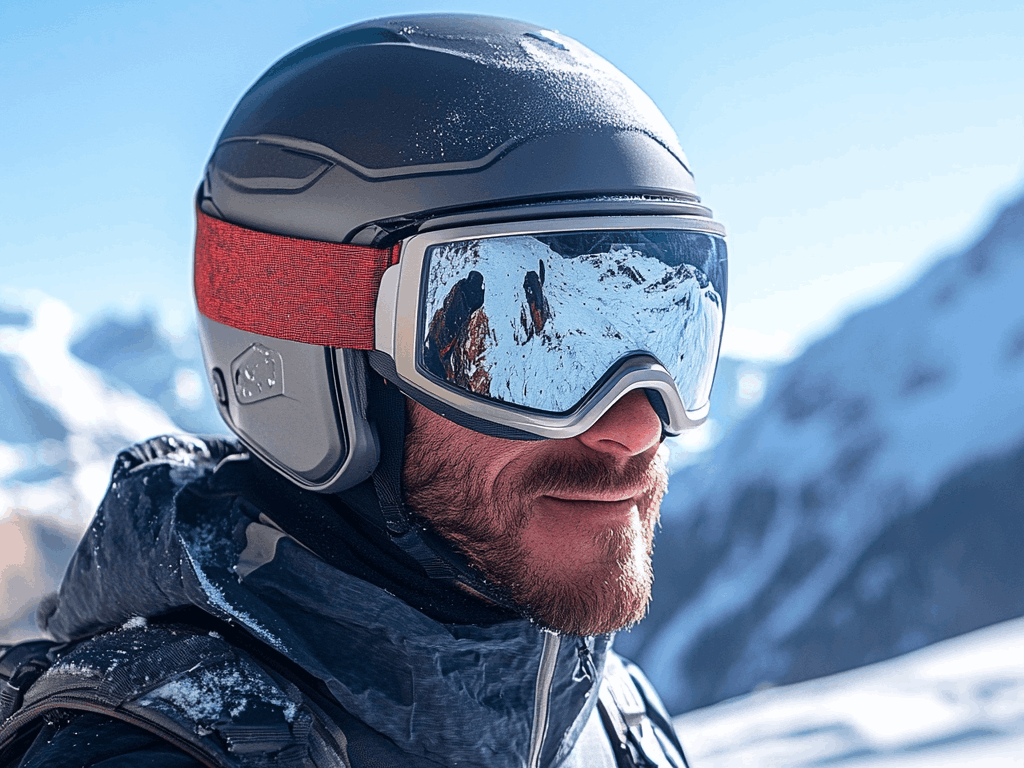Why Goggles Matter
Switzerland’s slopes get intense sunlight, especially at high altitudes like Saas-Fee’s glacier (3,600 meters). UV protection shields your eyes from harmful rays, while anti-fog tech prevents moisture buildup during sweaty runs or snowstorms. Good goggles also boost contrast, helping you spot icy patches or moguls in St. Moritz’s variable light. Prices range from CHF 50 to CHF 250, but the right pair saves your day.
Top 5 Goggle Picks
Budget All-Rounder (CHF 50–80): A spherical lens goggle with basic anti-fog coating and 100% UV protection. Great for beginners on Grindelwald’s blue runs. Single-layer lens, but decent for sunny days.
Mid-Range Versatiler (CHF 80–120): Dual-layer lens with advanced anti-fog and a quick-change system for swapping lenses (clear for low light, tinted for sun). Ideal for Davos’s mixed conditions.
High-Performance All-Mountain (CHF 120–180): Photochromic lens adjusts to light changes, with superior anti-fog vents and a wide field of view. Perfect for Zermatt’s long pistes.
Powder Pro (CHF 180–220): Oversized spherical lens with top-tier anti-fog and high-contrast tint for powder days in Verbier. Helmet-compatible with adjustable straps.
Luxury Freeride (CHF 220–250): Polarized lens with premium anti-fog and ventilation, plus a sleek frame. Built for Saas-Fee’s glacier glare and off-piste adventures.
Key Features to Look For
Anti-Fog Tech: Double lenses with coatings and side vents prevent fogging. Look for “anti-fog treated” labels.
UV Protection: 100% UVA/UVB blocking is non-negotiable for alpine sun.
Lens Tint: Yellow or rose for low light (foggy St. Moritz days); dark or mirrored for bright Zermatt runs. Photochromic lenses (CHF 150+) adapt automatically.
Fit: Ensure goggles fit your helmet and face shape. Adjustable straps and foam padding add comfort.
Ventilation: Mesh vents or fans (in high-end models) reduce fogging during sweaty descents.
Keeping Goggles Fog-Free
Don’t Wipe Inside: Wiping the inner lens damages anti-fog coatings. Shake off snow and air-dry.
Ventilate: Remove goggles during breaks to let moisture escape. Don’t tuck them on your forehead—sweat causes fog.
Store Smart: Use a microfiber bag (often included) to prevent scratches. Avoid leaving goggles in damp bags.
Clean Properly: Use a microfiber cloth (CHF 5) and lens cleaner (CHF 10). Avoid harsh chemicals.
Where to Buy
Resorts: Shops in Zermatt, Verbier, or Grindelwald stock goggles (CHF 50–250). Check for sales in March.
Online: Swiss retailers offer deals, but try on in-store for fit. Shipping costs CHF 10–20.
Rentals: Rent goggles for CHF 10–15/day in resorts like Saas-Fee to test styles.
Practical Tips
Spare Lens: Carry a second lens (CHF 20–50) for weather changes. Clear lenses work for night skiing.
Fit Check: Ensure no gaps between goggles and helmet to block snow.
Travel: Pack goggles in a hard case (CHF 15) to avoid damage. Fly to Zurich or Geneva via our widget.
Budget Hack: Buy last season’s models for 20–30% off in Davos shops.
Clear goggles mean epic ski days in Switzerland’s Alps. These picks keep you seeing every turn, mogul, and Matterhorn view. Grab a pair and shred with confidence!
